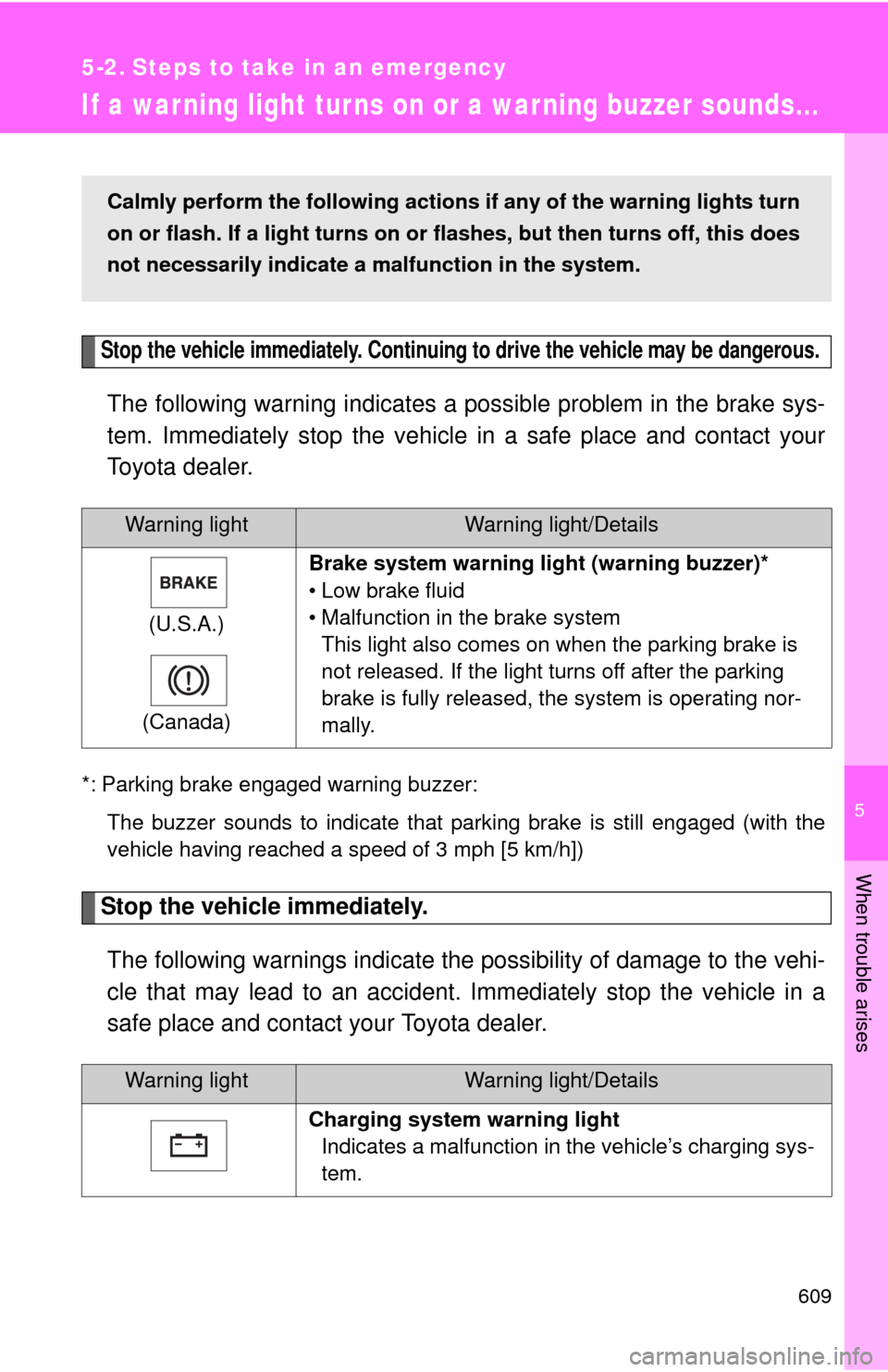Page 592 of 744
592 4-3. Do-it-yourself maintenance
■Front side marker lights
Remove the fender liner clip.
Partly remove the fender liner
and turn the bulb base counter-
clockwise.
Page 593 of 744
593
4-3. Do-it-yourself maintenance
4
Maintenance and care
Remove the light bulb.
■ Front fog lights (if equipped)
Remove the bolts and partly
remove the fender liner.
Turn the bulb counterclockwise.
Page 594 of 744
594 4-3. Do-it-yourself maintenance
Unplug the connector while
depressing the lock release.
■ Stop/tail and rear side marker lights, rear turn signal lights
and back-up lights
Remove the bolts and rear com-
bination assembly.
Turn the bulb bases counter-
clockwise.
Stop/tail and rear side marker
light
Rear turn signal light
Back-up light
Page 596 of 744
596 4-3. Do-it-yourself maintenance
■License plate lights
Remove the screw and light unit.
Turn the bulb base counterclock-
wise.
Remove the light bulb.
Page 597 of 744
597
4-3. Do-it-yourself maintenance
4
Maintenance and care
■
Lights other than the above
If any of the lights listed below has burnt out, have it replaced by
your Toyota dealer.
• Outer foot light (if equipped)
• Side turn signal light (if equipped)
■ Condensation build-up on th e inside of the lens
Contact your Toyota dealer for more information in the following situations.
Temporary condensation build-up on the inside of the headlight lens does
not indicate a malfunction.
● Large drops of water are built up on the inside of the lens.
● Water has built up inside the headlight.
■ LED side turn signal lights
The side turn signal light consists of a number of LEDs. If any of the LEDs
burn out, take your vehicle to your Toyota dealer to have the light replaced.
■ Installing the fender liner clips
Insert the clip.
Page 598 of 744
598 4-3. Do-it-yourself maintenance
CAUTION
■Replacing light bulbs
●Turn off the headlights. Do not attempt to replace the bulb immediately
after turning off the headlights.
The bulbs become very hot and may cause burns.
● Do not touch the glass portion of the light bulb with bare hands. Hold the
bulb by the plastic or metal portion.
If the bulb is scratched or dropped it may blow out or crack.
● Fully install light bulbs and any parts used to secure them. Failing to do so
may result in heat damage, fire, or water entering the headlight unit. This
may damage the headlights or cause condensation to build up on the lens.
■ To prevent damage or fire
Make sure bulbs are fully seated and locked.
Page 600 of 744
600
5-1. Essential information
Emergency flashers
NOTICE
■To prevent battery discharge
Do not leave the emergency flashers on longer than necessary when the
engine is not running.
Use the emergency flashers if th e vehicle malfunctions or is
involved in an accident.
Press the switch to flash all
the turn signal lights. To turn
them off, press the switch
once again.
Page 609 of 744

5
When trouble arises
609
5-2. Steps to take in an emergency
If a war ning light turns on or a war ning buzzer sounds...
Stop the vehicle immediately. Continuing to drive the vehicle may be dangerous.
The following warning indicates a possible problem in the brake sys-
tem. Immediately stop the vehicle in a safe place and contact your
Toyota dealer.
*: Parking brake engaged warning buzzer:
The buzzer sounds to indicate that parking brake is still engaged (with the
vehicle having reached a speed of 3 mph [5 km/h])
Stop the vehicle immediately.
The following warnings indicate the possibility of damage to the vehi-
cle that may lead to an accident. Immediately stop the vehicle in a
safe place and contact your Toyota dealer.
Warning lightWarning light/Details
(U.S.A.)
(Canada) Brake system warning li
ght (warning buzzer)*
• Low brake fluid
• Malfunction in the brake system This light also comes on when the parking brake is
not released. If the light turns off after the parking
brake is fully released, the system is operating nor-
mally.
Warning lightWarning light/Details
Charging system warning light Indicates a malfunction in the vehicle’s charging sys-
tem.
Calmly perform the following actions if any of the warning lights turn
on or flash. If a light turns on or flashes, but then turns off, this does
not necessarily indicate a malfunction in the system.